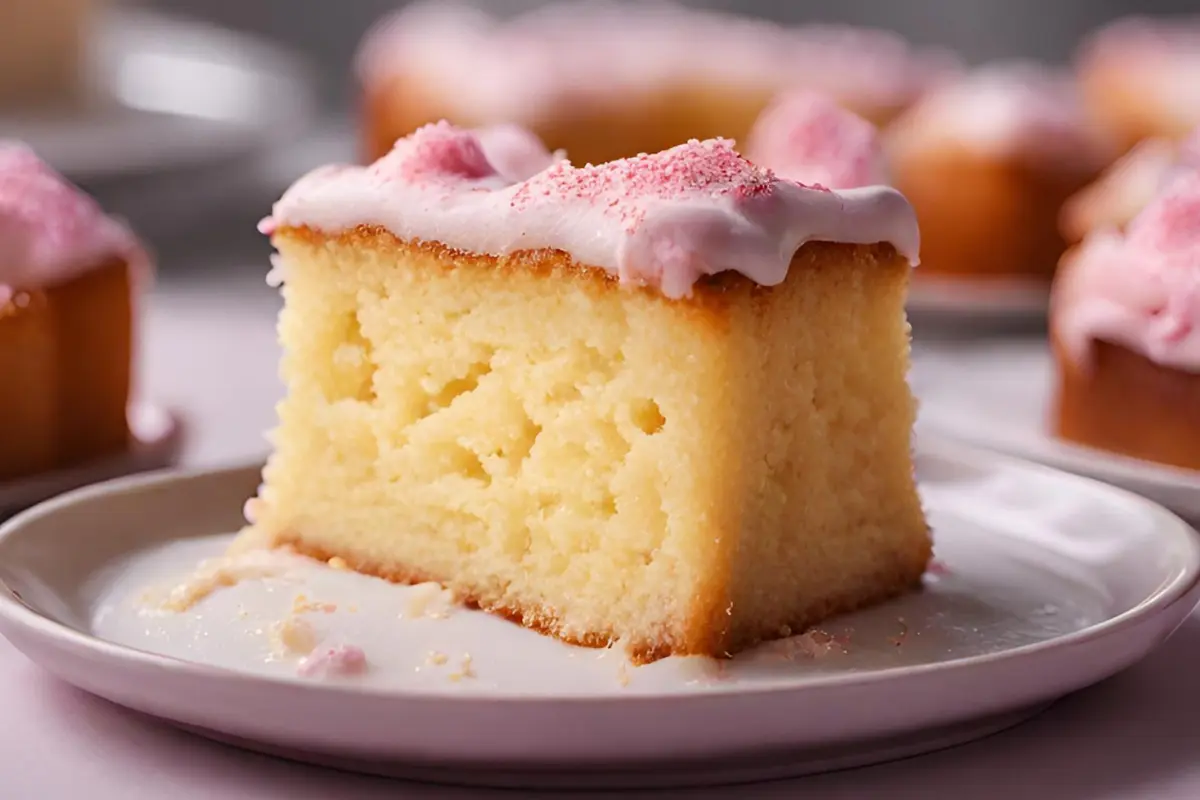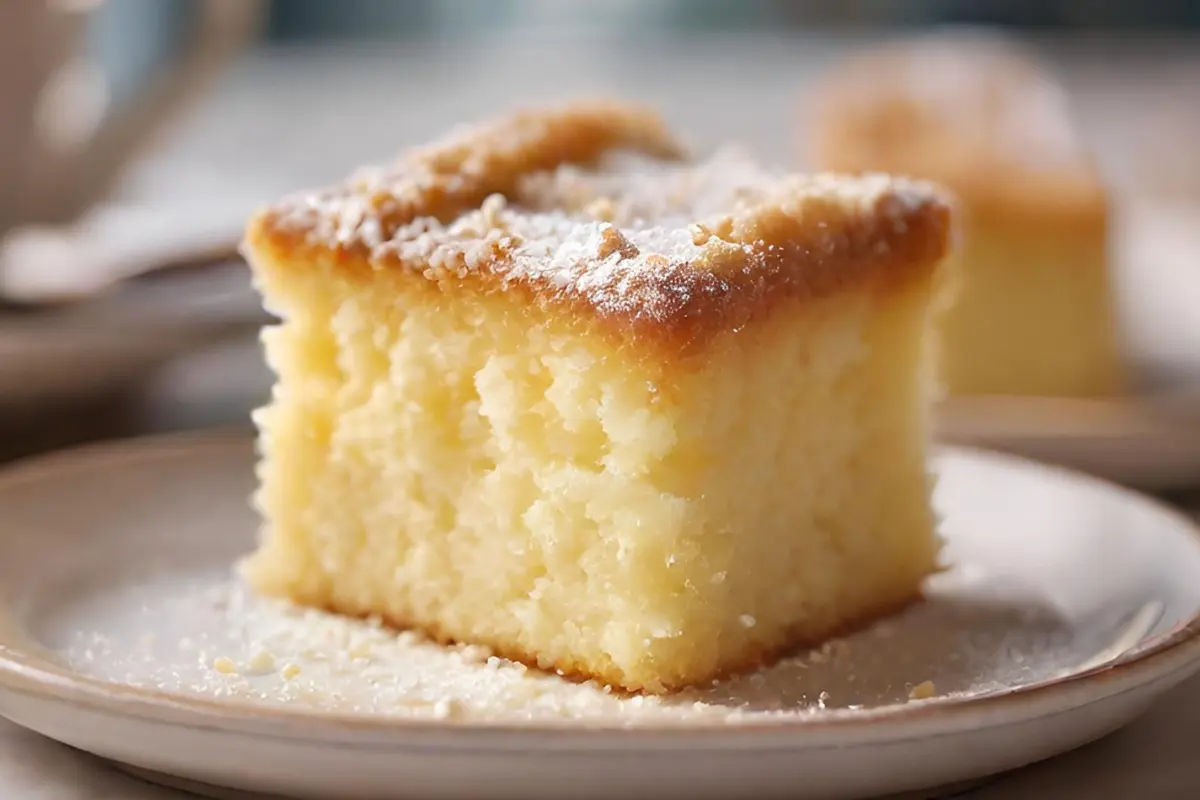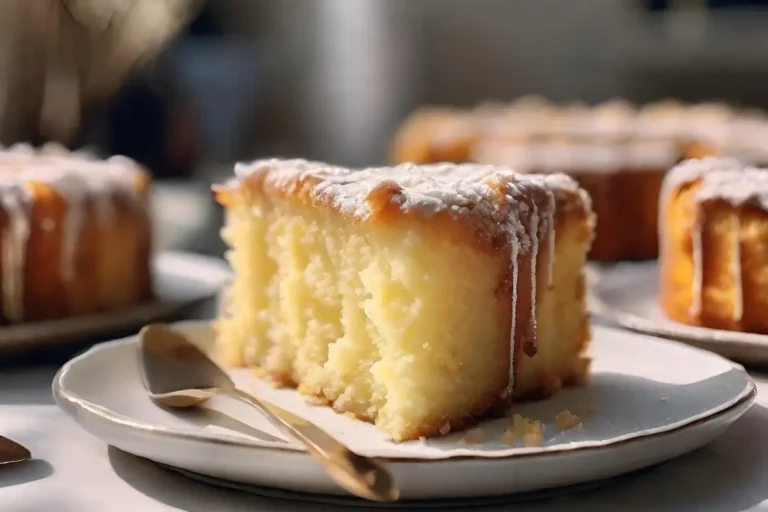Introduction to Butter Cake: Your Guide to Baking Perfection
Ever wondered how to make a butter cake that’s both scrumptious and fluffy? You’re in the right place! This comprehensive guide will walk you through the entire process, from selecting the right ingredients to mastering the baking techniques that ensure a perfect cake every time. Whether you’re a beginner or a seasoned baker, this article will provide you with all the tips and tricks to make a classic butter cake that’s a hit for any occasion. Let’s dive into the delightful world of buttercakes!
Introduction to Butter Cake
Overview of Butter Cake
Butter cake, a beloved classic in the baking world, stands out for its rich, buttery flavor and moist texture. Unlike other cakes, the key to a perfect butter cake lies in its simplicity and the quality of its ingredients. The journey to mastering this cake begins with understanding its unique characteristics and how it differs from its cousin, the pound cake.
Importance of Ingredients and Measurements
The foundation of a fantastic butter cake is precise ingredients and accurate measurements. Here’s how to get it right:
- Selecting the Right Ingredients
Quality matters! Opt for high-grade unsalted butter, and fresh eggs to enhance the flavor of your cake. Each ingredient plays a crucial role, and using the best available options will elevate your final product. - Measuring Ingredients Accurately
Precision is key! Use a digital scale for ingredients like flour and sugar to ensure exact measurements. This accuracy is crucial for the cake’s texture and rise.
In the next section, we’ll delve into preparing your baking environment and equipment before mixing the ingredients. Stay tuned for more tips on creating your perfect butter cake!
Step-by-Step Butter Cake Recipe
Preparation Before Baking
Before you dive into creating your butter cake, setting up your workspace and gathering the right equipment will make the process smoother and more enjoyable.
- Gathering Your Equipment
Ensure you have everything you need before you start: a mixer (stand or hand), mixing bowls, measuring cups, and a baking pan. Don’t forget to preheat your oven to the correct temperature, usually around 350°F (175°C), to ensure even baking. - Preparing the Baking Pan
Properly greasing and flouring your baking pan, or lining it with parchment paper, is crucial. This step prevents sticking and helps achieve a beautiful cake that releases easily from the pan.
Mixing the Ingredients
The method you use to combine your ingredients can greatly affect the texture of your cake. Here’s how to mix them correctly:
- Creaming Butter and Sugar
In order to make the mixture light and fluffy, begin by creaming the butter and sugar together. This process incorporates air into the batter, helping the cake rise during baking. - Adding Eggs and Vanilla
One egg at a time, adding and thoroughly mixing after each addition. Don’t rush this step, as it helps emulsify the batter. Incorporate the vanilla extract for that classic flavor.
Baking the Cake
It is time to bake now that your batter is prepared:
- Pouring and Leveling the Batter
Pour the batter into your prepared pan, using a spatula to spread it evenly. This ensures that your cake cooks uniformly. - Baking Time
Place the cake in the preheated oven and bake until a toothpick inserted into the center comes out clean. Keep an eye on it, as oven temperatures can vary. - Cooling
Once baked, let the cake cool in the pan for about 10 minutes before transferring it to a wire rack to cool completely. This prevents it from becoming soggy.
Next, we’ll explore the final touches, including how to cool and frost your butter cake to perfection. Stay tuned!
Additional Tips and Variations
Storing and Serving Butter Cake
Once your butter cake is baked and cooled, proper storage is key to maintaining its delicious taste and texture.
- Storage Tips
Store your cake at room temperature under a cake dome or wrapped in plastic wrap to keep it moist. If you need to keep it longer, you can refrigerate it for up to a week, ensuring it’s tightly wrapped to avoid absorbing fridge odors. - Serving Suggestions
Butter cake is versatile—serve it plain, dusted with powdered sugar, or topped with a light glaze or fruit. It’s perfect for afternoon tea or as a special treat.
Common Variations and Substitutions
Experimenting with different flavors and ingredients can turn the classic butter cake into something uniquely yours.
- Gluten-Free and Dairy-Free Alternatives
Substitute the all-purpose flour with a gluten-free blend and use dairy-free butter to cater to different dietary needs without compromising on taste. - Adding Flavors
Infuse your cake with citrus zests, spices like cinnamon, or extracts such as almond to enhance its flavor profile. Mixing in fruits or nuts can also add texture and taste.
Troubleshooting Common Problems
Even experienced bakers face issues now and then. Here’s how to solve some common cake baking problems:
- Dry Cake
Make sure to measure your ingredients precisely and avoid overbaking. A tad extra buttermilk or oil can help keep the cake moist. - Sinking Middle
This often happens if the cake is underbaked or too much leavening agent is used. Make sure to check the expiry date of your baking powder and avoid opening the oven door too early during baking.
With these tips and tricks, you’re now equipped to bake the perfect butter cake and adapt the recipe to your liking. Whether it’s for a special occasion or a simple family dessert, your butter cake is sure to impress. Happy baking!

Sustainable Baking Practices
As you continue to perfect your butter cake and experiment with new techniques, consider embracing sustainable baking practices. These can help reduce your environmental footprint while still enjoying the art of baking.
Choosing Sustainable Ingredients
Opting for locally sourced and organic ingredients can significantly impact sustainability.
- Local Sourcing
Buy ingredients like eggs, milk, and flour from local farmers or markets. This lowers transportation-related emissions while also assisting small businesses in the area. - Organic Selection
Use organic ingredients where possible. Organic farming practices are designed to reduce pollution and conserve water and soil quality, making them a more environmentally friendly choice.
Minimizing Waste in Baking
Reducing waste is a crucial aspect of sustainable baking.
- Ingredient Management
Plan your recipes carefully to ensure that you use exactly what you need, reducing leftovers and waste. Store ingredients properly to extend their shelf life. - Repurposing Leftovers
Find creative ways to use leftover ingredients or cake trimmings. For example, cake scraps can be turned into cake pops or truffles, and leftover frosting can be frozen for later use.
Energy-Efficient Baking Techniques
Using your kitchen appliances more efficiently can save energy and reduce your carbon footprint.
- Oven Usage
Bake multiple items at once to make full use of the heat. Avoid opening the oven door frequently as it causes temperature drops and requires additional energy to reheat. - Alternative Baking Methods
Explore energy-efficient appliances like convection ovens or pressure cookers that can bake cakes using less energy than traditional ovens.
Educating Others About Sustainable Baking
Sharing knowledge and practices with fellow bakers can amplify the impact of your sustainable efforts.
- Workshops and Baking Classes
Organize or participate in workshops that focus on sustainable baking techniques. It’s a great way to spread knowledge and foster a community of environmentally conscious bakers. - Online Sharing
Use your social media platforms or blogs to share tips, recipes, and successes in sustainable baking. This can inspire others to adopt similar practices.
Embracing sustainable baking practices not only helps the environment but also enhances your baking experience. It adds an element of mindfulness and responsibility to the joy of baking, making each butter cake you bake a testament to both quality and care for the planet.
Exploring Advanced Butter Cake Techniques
Once you’ve mastered the basics of making a butter cake, you may want to explore more advanced techniques to elevate your baking skills further. These methods can add complexity in flavor and presentation, making your cakes even more impressive.
Incorporating Layering and Filling
Creating a layered butter cake adds visual appeal and allows for the incorporation of various flavors and textures.
- Technique for Layering
Slice your cooled cake horizontally into even layers. Use a serrated knife for precision. This technique creates a beautiful base for adding fillings. - Choosing the Right Filling
Select fillings that complement the rich flavor of butter cake. Popular choices include raspberry jam, lemon curd, or pastry cream. Spread the filling evenly between each layer before stacking them.
Mastering Decorative Frosting Techniques
Elevating your cake with decorative frosting can turn it into a showstopper.
- Using Piping Bags and Tips
Equip yourself with a variety of piping tips to create different designs. Practice techniques like rosettes, stars, or basket-weave patterns. - Frosting Consistency
Achieving the right frosting consistency is crucial. It should be smooth enough to spread yet stiff enough to hold its shape. Adjust with small amounts of milk or powdered sugar as needed.
Trying Out Flavor Infusions
Experiment with infusing your butter cake with unique flavors to create a truly gourmet experience.
- Infusing the Butter
Gently melt the butter and add herbs or spices like cinnamon or vanilla beans. Allow it to steep, then cool and solidify before using it in your cake batter. - Incorporating Alcohol for Flavor
Adding a small amount of rum or almond liqueur to the batter can enhance the cake’s flavor profile. Be mindful of the quantity to ensure it complements rather than overwhelms.
Experimenting with Cake Glazes
A glaze can add a sweet, shiny finish to your butter cake, making it visually appealing and adding an extra layer of flavor.
- Preparing a Simple Glaze
Mix powdered sugar with a little milk or citrus juice until smooth. Drizzle over the cooled cake for a glossy finish. - Customizing Your Glaze
Add flavor extracts, spices, or zest to your glaze to match the cake’s theme or the occasion.
By exploring these advanced techniques, you can enhance your baking repertoire and impress your guests with your skills. Each cake you bake not only offers a delicious treat but also a chance to express your creativity and passion for baking.

Enhancing Your Butter Cake with Seasonal Ingredients
One way to keep your butter cake exciting and ever-evolving is by incorporating seasonal ingredients. This approach not only adds variety and freshness to your baking but also aligns with sustainable practices by utilizing ingredients that are at their peak, reducing the need for long-distance transportation.
Spring and Summer Flavors
In the warmer months, focus on light, fresh flavors that complement the season.
- Berries and Citrus
Spring and summer are prime times for berries and citrus fruits. Lemon zest or orange blossom can add a fragrant touch to your cake, while fresh strawberries or blueberries can be folded into the batter or used as a topping. - Herbal Notes
Herbs like basil, mint, or lavender are in full bloom and can be infused into your cakes either through the batter or as part of a glaze, offering a unique flavor profile that’s subtly sophisticated.
Fall and Winter Ingredients
As the weather cools, embrace the richer, deeper flavors typical of the autumn and winter seasons.
- Spices and Nuts
Incorporate spices such as cinnamon, nutmeg, or clove to give your butter cake a warm, comforting taste. Nuts like pecans or walnuts can add a crunchy texture and nutty flavor, perfect for holiday baking. - Seasonal Fruits
Apples, pears, and pumpkins are plentiful. Consider making a caramel apple butter cake or adding a swirl of pumpkin spice mix to the batter for a festive twist.
Utilizing Seasonal Produce
Here are some tips for incorporating these ingredients effectively:
- Fresh vs. Preserved
Use fresh ingredients when they are in season and at their best. During the off-season, look for high-quality preserved or frozen options to maintain that burst of flavor without compromising on quality. - Flavor Pairings
Experiment with pairing seasonal fruits with complementary spices or herbs. For example, apple with cinnamon in fall or raspberry with lemon in summer enhances the flavors beautifully.
Decorating with a Seasonal Touch
Decorate your cakes to reflect the season. Edible flowers in spring, fresh berries in summer, candied nuts in fall, or frosted cranberries in winter can make your butter cake not only delicious but also a visual celebration of the season.
By adapting your butter cake recipes to incorporate seasonal ingredients, you create a delightful culinary experience that celebrates the diversity of flavors throughout the year. This approach not only keeps your baking exciting but also supports local agriculture and reduces environmental impact.
Answering Your Butter Cake Queries
Is Pound Cake the Same as Butter Cake?
While both are delicious and share some ingredients, pound cake and butter cake differ mainly in their ingredient ratios. Pound cake traditionally uses equal weights of flour, butter, eggs, and sugar, creating a denser texture, whereas butter cake might have varying proportions for a lighter, fluffier texture.
Can I Use Salted Butter Instead of unsalted butter?
Yes, you can use salted butter if that’s what you have on hand. Just reduce or omit any additional salt called for in the recipe to balance the flavors.
Does the Type of Flour Matter?
For butter cake, using cake flour can result in a softer, more tender crumb because of its lower protein content compared to all-purpose flour. However, all-purpose flour is perfectly fine and will still produce a delicious cake.
How Can I Increase the Moistness of My Butter Cake?
To ensure your butter cake stays moist, don’t overbake it. As the suggested baking time approaches, keep a watch on the cake’s baking progress and check it. Additionally, ingredients like buttermilk or yogurt can be added to the batter to enhance moisture.
What Are Some Popular Butter Cake Variations?
There are numerous ways to vary a basic butter cake:
- Add lemon zest or orange zest for a citrusy twist.
- Mix in a handful of berries or chopped fruit for a burst of flavor and texture.
- Create a marble cake by swirling through chocolate or coffee-flavored batter.
These FAQs should help you refine your butter cake-baking skills and encourage you to experiment with different flavors and techniques. Remember, baking is both an art and a science—don’t be afraid to try new things and make each recipe your own!

